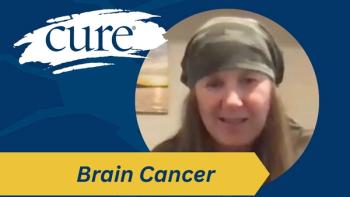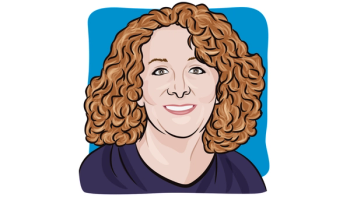
My Daughter Chose When — and How — She Was Going to Lose Her Hair to Cancer
Chemotherapy treatments for breast cancer would likely cause my daughter to lose her hair, but instead of waiting for her locks to fall out on their own, she took matters into her own hands.
When my then 27-year-old daughter first met with her medical oncologist and was told of his plan to treat her stage 2B breast cancer, he was very kind but forthright when he told her that there wasn’t a chemotherapy regimen available that would let her keep her hair. This is the face we are used to seeing in media images of breast cancer – the bald woman with drawn on eyebrows and fake eyelashes – and it brought my girl to tears realizing that she was soon going to become one of them.
Research showed my daughter that
Once the decision is made to go ahead with chemotherapy it’s like getting on an express train and all you can do is hope you’ll make it to the last station with life looking something like it did when you got on. A cancer diagnosis like my daughter’s often doesn’t allow for many choices. There isn’t much the patient can do to avoid experiencing side effects of treatment like nausea or fatigue or bone pain or neuropathy along the way.
Yes, there are medications that can help, but they come into play after the fact, and there is always that elephant-in-the-room awareness that some of the side effects will be forever, including the hair loss.
We found out that on average, hair starts to fall out two weeks after the first chemo infusion. That meant that once it started, my girl would have roughly 14 days before she had to say goodbye to how she looked. Fourteen days to reconcile that for the duration of treatment she would be a poster child for breast cancer everywhere we went. Fourteen days to prepare herself to look in the mirror and see cancer staring back at her.
As recovery from the second surgery progressed and the start date for chemotherapy came closer, I would catch my daughter sitting there playing with her hair, gazing off into space. Then one day she looked at me and said, “Knowing it’s going to happen is just making it worse” and a call was made to book an appointment to get her hair cut very short. And as she watched the scissors cut, watched her lustrous, beautiful hair fall to the floor, she made the choice to ask the stylist to just shave her head.
Because this was a choice she could make.
Although she didn’t have a choice in whether cancer would take her hair, she could choose when.
There is so little control in a patient with cancer’s life. You sit on the express train and watch stations whiz by and want to scream “I would like to get off now” but your ticket has already been punched.
Choosing to shave her head rather than experiencing her hair staying on the pillow when she sat up on the morning of the 14thday was one thing my child could do to flip the bird at the monster that had invaded her life. It was like standing in front of the train that she knew was coming making it run on her time for just a moment.
I couldn’t have been prouder.
For more news on cancer updates, research and education, don’t forget to




